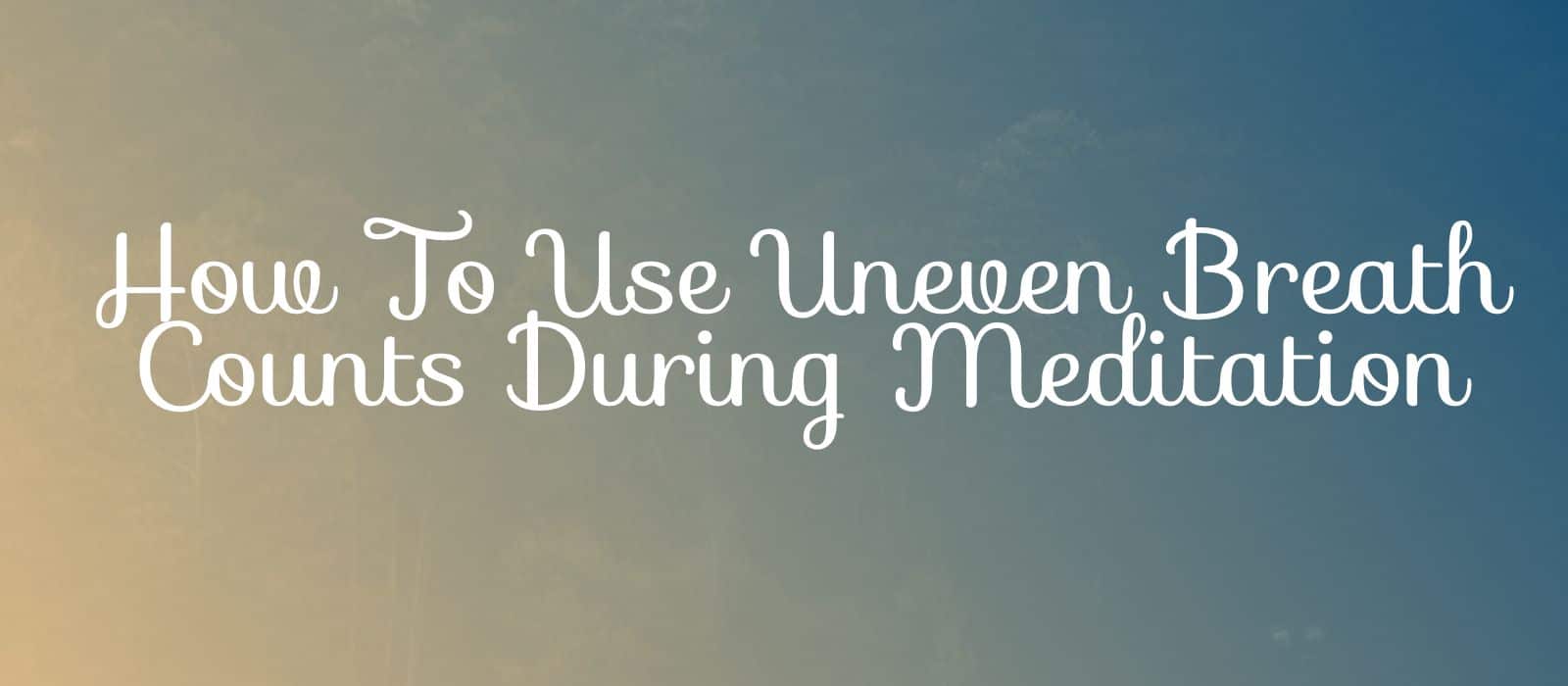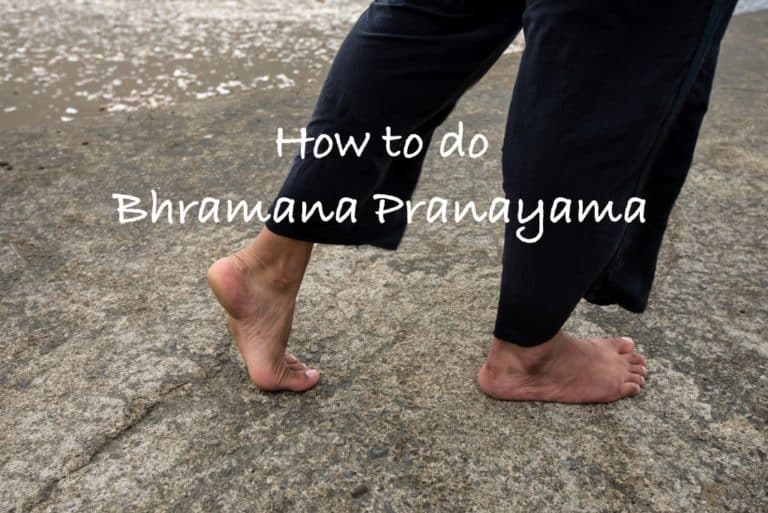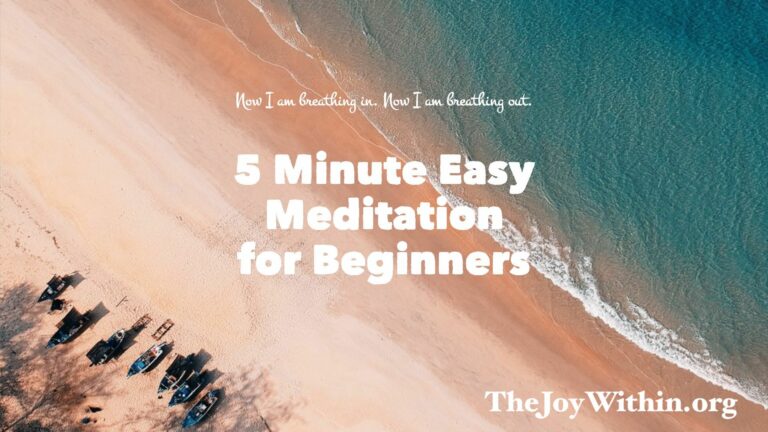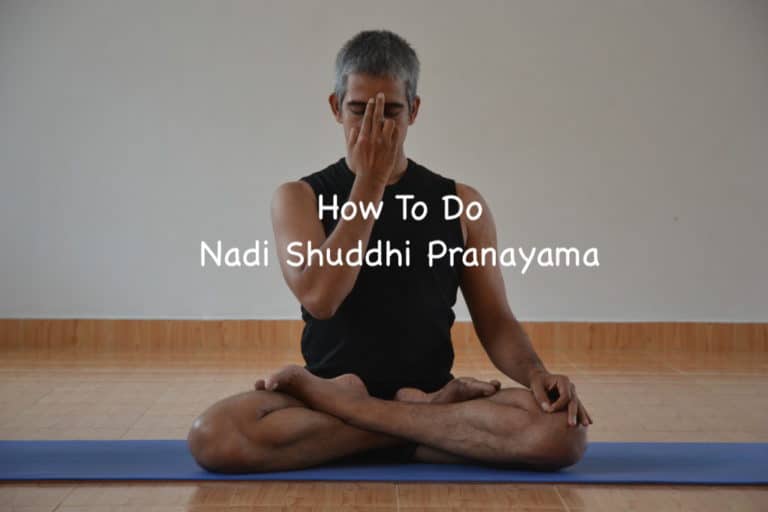Do you struggle to stay focused during meditation? Whether you find your mind wanders off every few seconds, or you relax a little too easily and nod off to sleep, you might want to try incorporating uneven breath counts into your practice.
In this post, I’ll quickly outline the benefits of uneven breathing, and then give you a simple guided meditation and exercise you can use to practice.
Click here to see more breath exercises.
Benefits of Uneven Breathing
Uneven breath counts are one of many tools you can use to help you stay focused during meditation. They can be incredibly soothing, because the idea is to give your mind just enough to focus on, that it stops paying attention to all of the stray thoughts that constantly pass through.
Because your breath naturally wants to even itself out, it takes just a slight amount of effort and awareness in order to consistently maintain a different pattern. While there are several good patterns to choose from, one of the most popular is the 4-7-8 breathing technique.
Another benefit of this practice is that it helps you to gain clarity, and bring more energy and awareness into your 6th chakra, the third-eye center. As you inhale, energy moves into your forehead, and then as you pause, you can more easily maintain a focus on this energy. This can yield a feeling of lightness and ease.
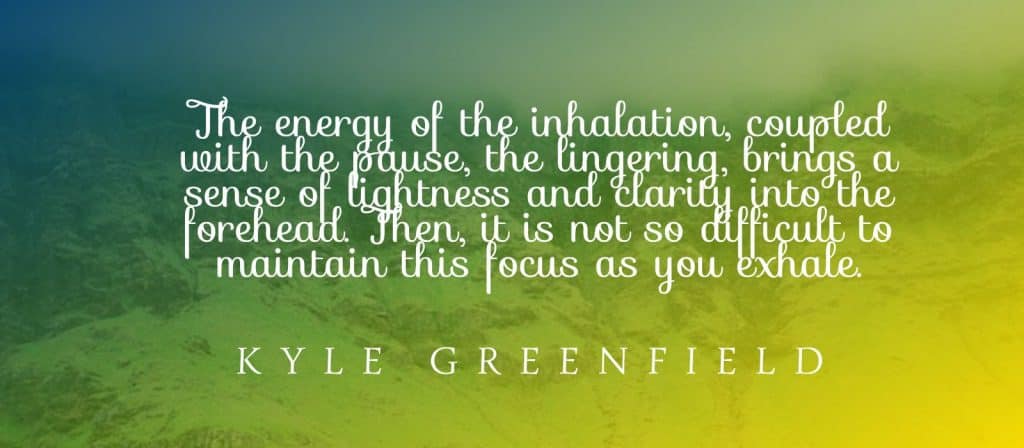
Guided Uneven Breathing Exercise
This meditation is featured as a part of our Introductory 30-day Course to Quiet The Mind.
Today, we are going to play with using an uneven breath count. We will inhale, pause, and exhale, using different durations for each.
The technique is simple:
First, Inhale for 4 counts.
Then, Pause for 7 counts, holding your breath in.
Exhale for 8 counts.
You must adjust your breath to meet these counts. So, the inhale becomes fuller, and stronger. This rush of energy will naturally lift your attention. If it is comfortable, focus on your third-eye, the center of your forehead. Then, allow your exhale to be slow and even, releasing every last bit of air out of your lungs.
If it feels natural, maintain your awareness on the center of your forehead, your sixth chakra. But, do not force this awareness, and if your attention drifts, that is ok.
For many people – but not all – the energy of the inhalation, coupled with the pause, the lingering, brings a sense of lightness and clarity into the forehead. Then, it is not so difficult to maintain this focus as you exhale.
In all cases, maintain your count.
4 counts to breathe in.
7 counts to linger.
8 counts to breathe out.
If you find this difficult, or you feel you are gasping for air, change your pace, keeping the same ratio. With practice, you will gradually be able to lengthen each cycle of breath.
Breathe in for 4.
Pause for 7.
Breathe out for 8.
Uneven breath counts are a great technique if you have trouble focusing during your meditations, or if you get drowsy, and tend to drift off to sleep.
Our breath naturally moves in even cycles. Even if you are not aware of it, your breath has a default, a set-point. When you are relaxed, it returns to this set point, over, and over again, without any effort on your part.
Uneven counts are effective because they lull you out of this state. They provide just enough for the mind to focus and remain alert, while also helping you to relax and quiet the mind.
As you focus on your count. Other thoughts may pass, but you cannot really focus upon them.
The mind remains tuned into the breath.
4. 7. 8.
When you are ready, release the count. Without effort, the breath returns to normal. But, you may find the lightness, the awareness in the third eye, will linger.
Rest into this awareness for as long as you feel relevant for you.

